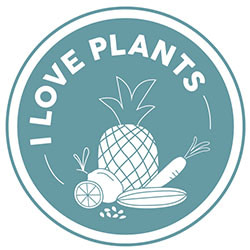It’s more than just eating bendy vegetables.
The unstoppable rise of of eating more plant-based foods comes in many forms.
These include going fully vegan OR going flexitarian.
Going flexitarian is for those who want to cut back on meat but don’t want to give it up entirely.
Attitudes toward meat and dairy products are evolving and we are seeing a huge shift in people’s eating habits and changing tastes.
Stats all over the place are being released on the upward trend.
UK based supermarket Sainsbury’s reports that they have seen an 82% increase in customers searching for vegan products online and a 65% increase of sales in plant-based products year-on-year.
The theory goes that you can still reap all of the benefits of eating a bunch of plant-based whole foods without having to give up your favorite dishes entirely.
What is Flexitarianism?
This trending term is is a portmanteau of ‘flexible vegetariansm.’
Don’t know what portmanteau means?
It’s two words mashed together like ‘Bromance’ or ‘Chillax.’ Fact of the day for you.
So. Flexitarianism.
Or semi-vegetariansm as it’s also called.
It’s a style of diet that is predominately plant-based, with the occasional addition meat, fish or dairy.
There are no set hard or fast rules. A flexitarian could eat meat once a day, once a week or just occasionally. Since they will eat meat, they are not classified as vegans or vegetarians.
It really is up to the individual.

Why Go Flexitarian?
According to The Vegan Society, if the world went vegan, it could save 8 million human lives by 2050, reduce greenhouse gas emissions by two thirds and lead to healthcare-related savings and avoided climate damages of $1.5 trillion.
Health Benefits
It is said that you can still benefit from the same health perks as those on a vegan diet. You can check The 8 Best Health Perks Of A Vegan Diet to read a full breakdown.
A diet choc-ful of plant-based whole foods, including flexitarian, is said to reduce the chances of chronic diseases including hearth disease, diabetes and cancer. It is said to give you glowing radiant skin and significantly aid weight-loss.
Frontiers in Nutrition carried out research specifically on the flexitarian diet, they found “There was emerging evidence suggestive of benefits for body weight, improved markers of metabolic health, blood pressure, and reduced risk of type 2 diabetes. SVD may also have a role to play in the treatment of inflammatory bowel diseases, such as Crohn’s disease.”
Environmental Impact
Our global food system is putting an enormous strain our planet’s finite resources.
Have you SEEN Greta Thunberg and her campaigning?? She has point which is well backed by science.
Agriculture and the livestock industry is the third largest generator of greenhouse gases. Reducing meat consumption would decreases greenhouse gas emissions, land and water use.
The amount of land which is required to create the feed for the animals to feed one single person, is ten times that than if you just grew the plant-based food directly for the human. This has lead to MASS deforestation of trees which would otherwise be absorbing the carbon out of the atmosphere.
A group of scientists have shared their findings to say that we need to use dietary changes as a way to reduce pollution, promote food sustainability and combat climate change.
The clever people over at Oxford Martin Programme on The Future of Food at Oxford University have now said that “climate change cannot sufficiently be mitigated without dietary changes towards more plant-based diets”
Greenpeace has also called for a decrease in meat and dairy production and consumption for a healthier planet.
Moving to a flexitarian diet where you occasionally eat meat or plant-based diet is the biggest thing you can do on an individual level to combat the climate crises.
According to the United Nations, the current world population of 7.6 billion is expected to reach 8.6 billion in 2030, 9.8 billion in 2050 and 11.2 billion in 2100.
Crikey.
I use a jokey word, but really, this is no joke.
Our food supplies will be under far greater stress. Demand will be 60% higher than it is today, but climate change, urbanization, and soil degradation, water shortages and pollution.
The only choice the human race is for humans to choose plant-based foods over animal based.

Animal Welfare
Alongside the environmental devastation, the meat industry is well documented for its abuse of animals.
Eating a flexitarian or whole foods plant-based diet is a more compassionate way of eating.
Perhaps animal welfare has taken a backseat in terms of media buzz around the environment, but in reality it doesn’t make the issue any less serious.
56 million land animals per year are sent to slaughter. According the Vegan Society, If the UK population was killed at the rate farmed animals are killed around the world, it would end in just 11 hours.
Animals are sentient beings.
They have intelligence, thoughts and they feel emotions.
They feel connection to those around them and they build relationships. They feel love, joy, happiness, fear, grief and pain.
Vegans believe that all sentient beings have the right to life and to freedom.
By eating fewer animals in your diet you are reducing the amount of animal suffering.
Animal agriculture is also the number one leading driver of species extinction on the planet.
Pescatarian vs Flexitarian
So many terms, it’s hard to keep up! Do you find that too?
Pescatarian is a person who chooses to eat no meat but they eat fish. They will generally eat as much fish as they like.
A flexitarian will eat meat and potentially fish too. A pescatarian will only eat fish.

How Do I Switch From A Meat-Base Diet To Flexitarian?
The recommended best way is to start gradually.
- ‘Meatless Monday’ – This is as it sounds and just excluding meat from your diet on Mondays.
- OMD – In 2019 Suzy Amis Cameron launched a movement of ‘One Meal a Day.’ She has the legendary tv personality Oprah also participating.
The movement encourages you to eat plant-based one a day. Suzy wants you to cut your environmental ‘foodprint’ in half by simple eating more plant-based foods.
- Weekday Vs Weekend – Some also go down the route of trying to cut out animal products from their diet during the week but then have ‘meat treats’ on the weekend.
It’s really up to you for how long or how slow you want set off from the starting blocks.
Most flexitarians aim to eat meat, dairy or eggs just a few times a week.
But as I said before, there are no hard rules on how many times flexitarians eat animal products.
To make meals plant-based, a great place to start is by swapping out for alternatives.
Try trading dairy milk for almond milk in your breakfast, chickpeas for chicken in your lunch salads or beans instead of beef in your burritos. Here are some delicious vegan plant-based recipe ideas for you to try!

PLANT-BASED FOOD MADE SIMPLE
Eating plant-based doesn’t have to be complicated. This Complete Plant-Based Diet Foods List makes grocery shopping quick, easy and delicious.
Plant-Based Nutrition Info
Eating a flexitarian diet in an informed way can be healthy for the human body.
However it’s important to pay attention to your macros and ensure you’re getting all the vitamins and minerals you need too.
According to Dr Megan Rossi, a nutritionist and dietician from King’s College London (PhD in gut and kidney health), says “we should be eating 30 different plant-based foods per week for an optimum healthy gut.”
By doing this and trying to eat different colors of the rainbow you’ll easily be consuming a nutrient dense diet.
It’s essential to make sure you’re getting enough B12. This was formally found in soil, but now humans have sanitized it so much that the B12 has been removed.
You get B12 when you eat meat because the animals have been supplemented with it.
If you’re cutting back on your meat consumption it’s important to go straight to the source and take a B12 supplement.
Everyone should be taking a B12 supplement really anyway, not just vegans.
Check out Where Vegans Get Their Protein From. You can also read about about nutritional info in this article about going fully plant-based.
Foods Flexitarian’s Eat
Flexitarian’s generally like minimally processed plant-based foods and try to have a diet and try to limit animal products.
- Protein sources include: Legumes, grains, chickpeas, poultry, red meat, fish, tofu, eggs
- Vegetables: Leafy greens, peppers, zucchini, carrots, sweet potato, peas, butternut squash
- Fruits: Oranges, apples, bananas, berries, grapefruit, grapes, avocado
- Nuts and seeds: Cashews, almonds, macadamia, walnuts, pecans, pine nuts, flaxseed, chia seeds, nut butters
- Dairy: Butter, milk, cheese

Foods To Avoid On The Flexitarian Diet
If you have decided to cut back on meat for health reasons, what will also improve your health is cutting back on processed meats and foods.
It is recommended to also cut back on:
- Processed meats: Burgers, processed cold meats, sausages
- Refined carbohydrates: White rice, bread, bagels, candies
- Fast food: Fries, nuggets, mozzarella sticks
Is The Flexitarian Diet Expensive
In theory, it should be no more expensive than a meal which includes mostly meat and dairy.
You’ll be replacing animal proteins, with plant-based protein which is easier on the grocery bill.
To save even further dollars you could try bulk buying plant-based protein sources such as legumes and grains.
I’m yet to meet a person who says eating plant-based is more expensive than eating meat and dairy.
Losing Weight On A Flexitarian Diet
Author and dietician Dawn Jackson Blatner advocates that the smart way to cut calories is through a mainly plant-based diet.
The key is to emphasize the plant-based component of this diet by eating lots of fruits, vegetables, whole grains, nuts and seeds.
She is all about not taking away foods completely, but instead adding MORE foods to your diet.
Blatner’s book, The Flexitarian Diet provides flexible meal plans, meat-substitute recipes combined with weight-loss tips.
According to Blatner, Flexitarians weigh 15% less, have a lower rate of heart disease, diabetes and cancer, and live 3.6 years longer than their carnivorous counterparts.
She estimates that an average person could shed up to 30 pounds just by sticking to the flexitarian diet for 6-12 months.
Blatner considers you a beginner flexitarian if you have two meatless days per week (26 ounces of meat or poultry per week).
Advanced flexitarians skip meat 3 to 4 days a week (18 ounces of meat or poultry a week).
Experts go meatless 5 or more days a week (9 ounces of meat or poultry).

The Final Word
Ultimately, going flexitarian is having a flexible approach to your diet, without having to give up meat. If you’re a meat lover, it gives you freedom.
Globally, environmentally, it’s a NEED, not optional. The current food system for human consumption is not sustainable.
Many humans are suffering from chronic diseases or obesity, which can be entirely preventable through good nutrition and diet.
If going fully plant-based vegan doesn’t sound like your vibe, then flexitarianism could be your answer!
Any progress is good progress and it’s the future generations who will be most grateful.
Being flexitarian means making climate-friendly food choices which are also good for your health and compassionate towards animals.
Let’s Be Friends
Sign up to receive delicious plant-based recipes and handy lifestyle tips straight to your inbox!
Pin Me On Pinterest







